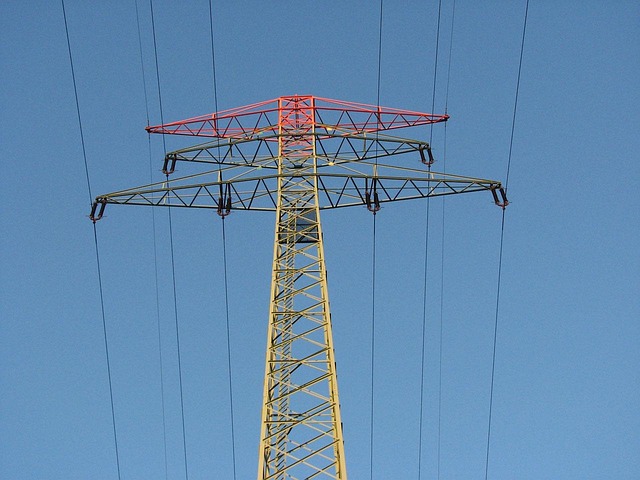Clash detection in water and sewer network design relies on advanced technologies like GIS, 3D modeling, and sensor networks to map and monitor complex systems. Early conflict identification through virtual modeling reduces on-site issues, enhancing efficiency. Effective resolution strategies optimize network performance, minimize service disruptions, and promote sustainable utility management by leveraging technology and communication.
Underground utilities, comprising intricate networks of pipes and cables, pose unique challenges in maintenance and renovation. Clash detection and effective conflict resolution are essential practices to ensure safe infrastructure upgrades, especially in urban areas where these systems intertwine. This article explores the complexities of underground utility management, delving into advanced clash detection techniques, assessing impact on water and sewer networks, and providing efficient resolution strategies for harmonious coexistence between construction projects and vital water distribution systems, adhering to best practices in water and sewer network design.
Understanding Underground Utility Complexities
Underground utility networks, encompassing intricate systems of water and sewer pipes, present unique challenges for clash detection and conflict resolution. These networks, often buried deep beneath urban landscapes, are designed to deliver essential services while maintaining optimal efficiency and integrity. The complexity arises from diverse factors: varying pipe materials, sizes, and ages; complex interconnections; and constant changes due to construction, maintenance, or upgrades.
Effective clash detection requires a comprehensive understanding of this underground utility landscape. Advanced technologies like geospatial data, 3D modeling, and sensor networks play a pivotal role in mapping and monitoring these systems accurately. By integrating real-time data with historical records, professionals can anticipate potential conflicts, ensuring timely resolution to prevent disruptions in vital water and sewer services.
Clash Detection Techniques: Tools and Technologies
Clash detection techniques play a pivotal role in ensuring seamless integration and conflict-free installation during the construction of underground utility systems, particularly intricate water and sewer network designs. Modern technology offers a range of tools to facilitate this process, from advanced software to innovative hardware solutions.
Geographic Information Systems (GIS) and design software equipped with clash detection algorithms are industry standards. These digital tools allow engineers to virtually model and overlap various utility layers, identifying potential conflicts before excavation begins. Additionally, laser scanning and 3D imaging technologies provide accurate site mapping, enabling precise comparisons and clash analysis. Real-time data acquisition through these methods enhances project efficiency by revealing issues early in the design phase, thereby reducing costly on-site conflicts during construction of water and sewer networks.
Assessing Conflict Impact on Water and Sewer Networks
When it comes to clash detection and conflict resolution for underground utilities, particularly in water and sewer network design, understanding the potential impact on these critical infrastructure systems is paramount. Each conflict—whether it involves a new construction project or maintenance work—has the capacity to disrupt the delicate balance of these networks, affecting water flow, pressure, and overall system efficiency. Assessing these impacts early and thoroughly is crucial for minimizing disruptions and ensuring the longevity of vital community services.
Water and sewer network design professionals must consider not just physical clashes between underground utilities but also the broader systemic implications. This involves analyzing how conflicts could influence water distribution, sewage treatment, and collection processes. By employing advanced detection methods and comprehensive impact assessments, stakeholders can make informed decisions to resolve conflicts in a way that optimizes network performance, reduces service interruptions, and promotes sustainable utility management practices.
Efficient Conflict Resolution Strategies for Safe Infrastructure Maintenance
Efficient conflict resolution strategies are paramount in maintaining a safe and reliable water and sewer network design. When planning infrastructure maintenance, it’s crucial to anticipate potential conflicts between different utilities buried underground. One effective approach is implementing a robust clash detection system that utilizes advanced technology, such as 3D modeling and mapping software, to identify overlapping or close-proximity utility lines before any excavation begins.
By doing so, utility companies can significantly reduce the risk of damaging critical infrastructure during maintenance operations. Additionally, establishing clear communication channels between stakeholders—including utilities, contractors, and local authorities—is essential. Collaborative efforts, like regular coordination meetings and centralized clash resolution platforms, ensure that everyone is aware of upcoming maintenance activities, facilitating a swift and harmonious process to address any identified conflicts.
Clash detection and conflict resolution are vital components of safe and efficient infrastructure maintenance, especially in urban areas with complex underground utility networks. By employing advanced tools and technologies for clash detection, along with strategic conflict resolution methods, we can enhance the integrity of water and sewer networks, ensuring they remain reliable and resilient. Integrating these practices into standard operating procedures is essential for navigating the intricate landscape of underground utilities, ultimately contributing to more sustainable and robust water and sewer network design.
